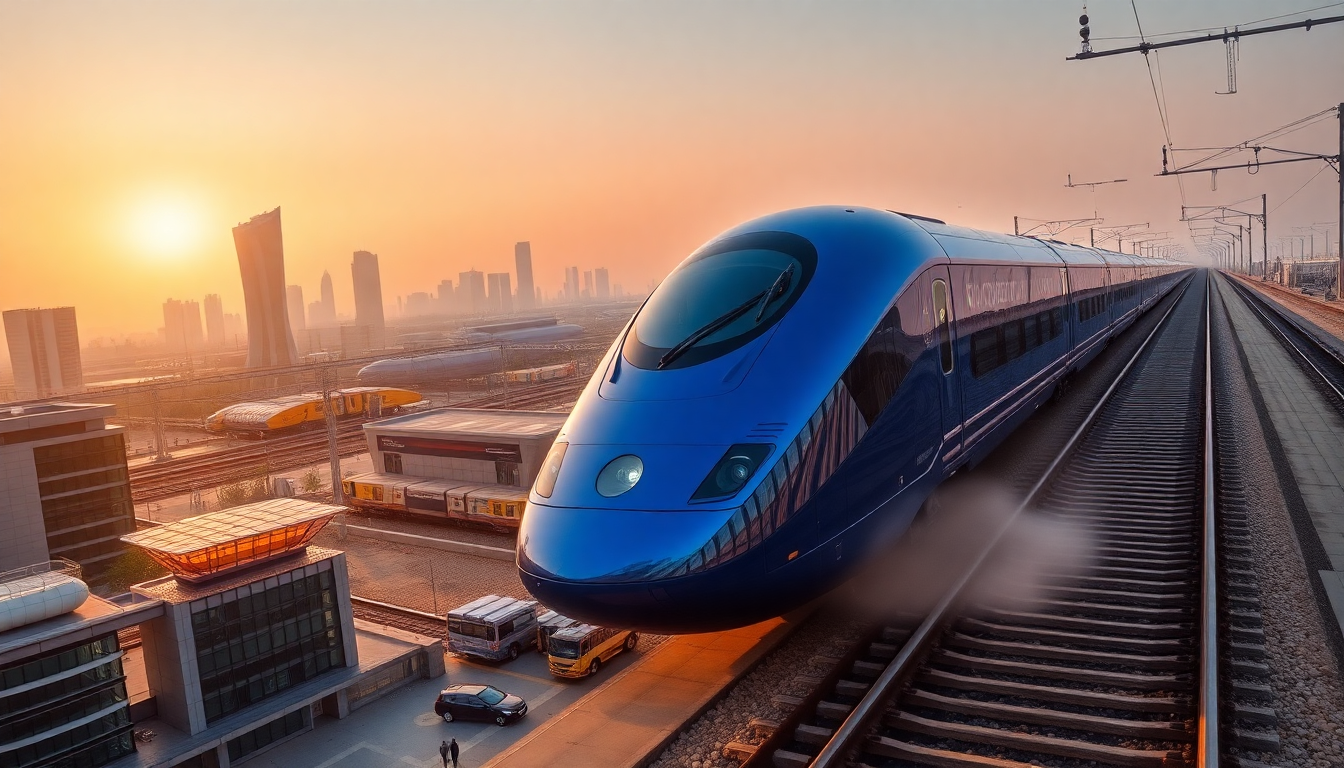Table of Contents
As we watch the landscape of high-speed rail change, China’s CR450 train is gearing up to steal the spotlight with its upcoming commercial trials. This ambitious project aims for astonishing speeds of 400 km/h. It’s fascinating to see this development unfold, especially as the United States grapples with its own high-speed rail dreams, notably the recent federal funding cuts for California’s ambitious project. China’s strides in rail technology not only reflect its dedication to faster travel but also showcase a remarkable ability to overcome engineering challenges that have lingered for years.
Advancements in High-Speed Rail Technology
The CR450 train is a product of extensive research and innovation. By pushing past the previous speed limit of 350 km/h, engineers have tackled the aerodynamic resistance and energy consumption that have held back progress. According to Shao Jun from the China Academy of Railway Sciences, high-speed trains face up to 95% of their resistance from air. Isn’t it interesting how something as simple as air can have such a huge impact on efficiency and costs?
To combat these challenges, the team behind the CR450 completely redesigned the train’s front. Inspired by nature—think of the sleek shapes of fast-flying birds—they managed to cut drag by about 2.6%. This isn’t just about speed; it’s also about using less energy, which is crucial for a sustainable transportation future.
But they didn’t stop there. Engineers turned their attention to the undercarriage, an area often overlooked in aerodynamic design. By adding a cover structure to protect exposed bogie components, they created a much more streamlined shape, reducing resistance by an impressive 22%. This innovative approach shows just how much careful design can enhance performance.
Implications of Increased Speed
What does it mean to reach 400 km/h? The implications are significant. You might think that a 50 km/h increase would lead to a drastic 30% rise in aerodynamic resistance, but thanks to the CR450’s clever design tweaks, energy consumption stays on par with its predecessor, the CR400 Fuxing, which operates at 350 km/h. This efficiency is crucial—not just for keeping costs down, but for being environmentally responsible, as rail transport is often seen as a greener choice compared to road and air travel.
As China continues to push the limits of high-speed rail, the CR450 stands as a testament to its engineering expertise and vision for the future of transportation. This train isn’t just a way to get from point A to point B; it embodies a commitment to innovation and sustainability in public transport systems.
Future Prospects for High-Speed Rail
Looking ahead, the successful rollout of the CR450 could usher in a new era for high-speed rail. With trials on the horizon, industry insiders are closely watching how this technology might influence rail systems worldwide. Imagine the possibility of increased travel efficiency, shorter journey times, and lower operational costs encouraging other countries to rethink their own high-speed rail strategies—exciting, right?
As nations across the globe tackle urbanization and transportation congestion, high-speed rail presents an attractive solution. The breakthroughs demonstrated by the CR450 could spark similar initiatives worldwide, fostering international cooperation in rail technology development.
In conclusion, China’s CR450 train is more than just an engineering achievement; it represents the future of high-speed rail travel. With its innovative design and focus on efficiency, the CR450 could set new standards for rail systems globally, paving the way for faster, more reliable, and environmentally friendly transportation options. Isn’t it thrilling to think about what the future holds?


